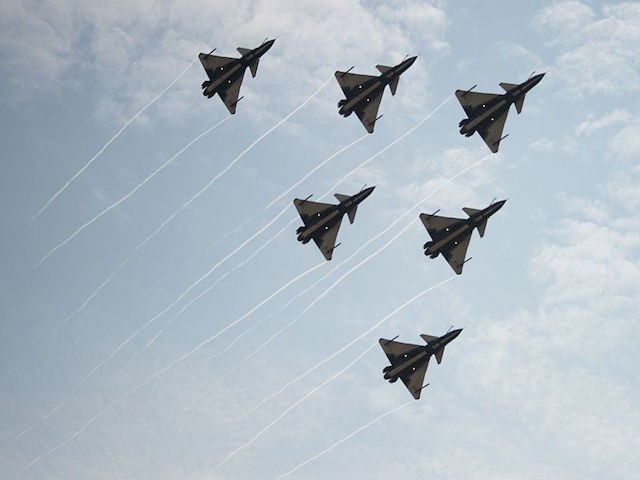South Korea scrambled fighter jets on Monday in response to a provocative Chinese aircraft exercise over the Sea of Japan.
At two points during the exercise, the Chinese planes – including two fighters, two bombers, and a recon plane – penetrated South Korea’s air defense identification zone. Another exercise appeared aimed at intimidating Taiwan and drew a similar response from Japanese fighters.
An official from South Korea’s Joint Chiefs of Staff told the Associated Press that “South Korea used a military hotline to warn China of its planes’ entrance to the zone and China replied that it’s part of routine training.”
“This is a regular annual training arrangement of China’s air force that accords with the relevant international laws and practices and it isn’t aimed at any particular state, region and target,” insisted Chinese air force spokesman Shen Jinke.
Shen said the Chinese drills were “lawful and reasonable” and were not “targeted at any specific country or region.”
The AP report quotes the Taiwanese military stating that China simultaneously held a drill in the Bashi Channel and Miyako Strait, which separates Taiwan from the Philippines and Japan, respectively.
Japanese F-15 fighters were reportedly scrambled to intercept the Chinese planes involved in this drill, the second Chinese exercise in two days that appears aimed at intimidating Taiwan.
According to the Japanese Defense Ministry, the three surveillance and electronic warfare planes used in this exercise by China violated Japan’s air defense identification zone. The five planes China dispatched to the Sea of Japan exercise also allegedly violated Japan’s air defense identification zone. As of late Monday morning, the Japanese government has not issued a formal statement about the incident.
The South China Morning Post quotes Li Jie, a military expert in Beijing, asserting it is now “normal and routine” for Chinese forces to “enter international waters or airspace.”
“To project power and protect its overseas interests, Chinese forces have to go further and further,” he explained.
Senior analyst Ben Ho of Nanyang Technological University predicted the incident would be only a minor bump in China-South Korea relations, even though Chinese warplanes violated South Korean air defense space only a few days after South Korean President Moon Jae-in held a fence-mending visit with Chinese President Xi Jinping in Beijing. The visit was because “the two nations have a greater common interest in countering the threat posed by Pyongyang’s missile and nuclear programmes, as well as fostering already close economic relations.”
This theory supposes that South Korea will interpret China’s exercises as preparation for trouble with North Korea or perhaps the collapse of the regime in Pyongyang. Beijing seems to be putting some effort into signaling such readiness to Seoul and Washington, although questions will doubtless linger about precisely what the Chinese are prepared to do about North Korea or about their territorial claims in the Pacific region for that matter.
The Korea Times reported on Monday that China conducted a massive drill last year involving some 100,000 troops that was specifically designed to simulate seizing North Korea’s Yongbyon nuclear complex. The drill was supposedly observed by both South Korean and American reconnaissance satellites and presumably found an audience in Pyongyang as well.
South Korean officials denied they have discussed China’s Yongbyon exercise with the United States and would neither confirm nor deny that the exercise took place as reported.

COMMENTS
Please let us know if you're having issues with commenting.